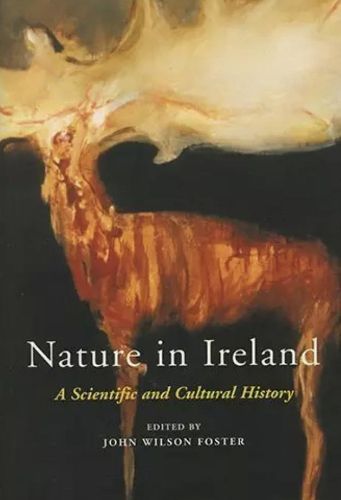Readings Newsletter
Become a Readings Member to make your shopping experience even easier.
Sign in or sign up for free!
You’re not far away from qualifying for FREE standard shipping within Australia
You’ve qualified for FREE standard shipping within Australia
The cart is loading…






How has Irish nature been studied? How has it been expressed in literature and popular culture? How has it influenced, and been influenced by, political, economic and social change? These long-neglected questions are pursued in Nature in Ireland, a pioneering collection of original essays by leading naturalists, science writers and cultural historians who bring us from the geological prehistory of the island to the environmental threats of the late twentieth century. Nature in Ireland is an indispensable reference source, containing definitive histories of Irish botany, mammalogy, entomology, fish and fisheries, geology, meteorology, ornithology, woodlands, demesnes and bogs. These essays reclaim the study of nature as a major contribution to Irish culture and a significant field of Irish studies, drawing out the links between scientific study, history, art and popular culture. Others focus on specific cultural aspects of nature in Ireland: Sean Lysaght explores the question of nomenclature in a bilingual society; Michael Viney gives a lively critical history of hunting, shooting and other field sports; Dorinda Outram examines the relationship between the standard continental models of natural history and the Irish experience; John Feehan writes of the challenges of conservation and environmentalism; J.H. Andrews presents the history of the mapping of Ireland’s physical geography; David Cabot discusses the essential texts of Irish natural history; and in three magisterial essays editor John Wilson Foster traces the traditions associated with perceptions of Irish nature, elucidates the complex relationship of ‘nature and nation’ in the nineteenth century, and, in ‘The Culture of Nature’, takes us on a dazzling tour from Yeats, Wilde, Kavanagh and Heaney to the cultural implications of eco-tourism, deep ecology, genetic engineering and artificial life. The essays are accompanied by over fifty photographs, maps, paintings and engravings, which illustrate the visual culture of Irish nature. In Nature in Ireland, the disciplinary boundaries that have partitioned the study of nature are cleared away with wit, style, and scrupulous scholarship. It is a landmark publication in the study of Irish history, science and culture.
$9.00 standard shipping within Australia
FREE standard shipping within Australia for orders over $100.00
Express & International shipping calculated at checkout
How has Irish nature been studied? How has it been expressed in literature and popular culture? How has it influenced, and been influenced by, political, economic and social change? These long-neglected questions are pursued in Nature in Ireland, a pioneering collection of original essays by leading naturalists, science writers and cultural historians who bring us from the geological prehistory of the island to the environmental threats of the late twentieth century. Nature in Ireland is an indispensable reference source, containing definitive histories of Irish botany, mammalogy, entomology, fish and fisheries, geology, meteorology, ornithology, woodlands, demesnes and bogs. These essays reclaim the study of nature as a major contribution to Irish culture and a significant field of Irish studies, drawing out the links between scientific study, history, art and popular culture. Others focus on specific cultural aspects of nature in Ireland: Sean Lysaght explores the question of nomenclature in a bilingual society; Michael Viney gives a lively critical history of hunting, shooting and other field sports; Dorinda Outram examines the relationship between the standard continental models of natural history and the Irish experience; John Feehan writes of the challenges of conservation and environmentalism; J.H. Andrews presents the history of the mapping of Ireland’s physical geography; David Cabot discusses the essential texts of Irish natural history; and in three magisterial essays editor John Wilson Foster traces the traditions associated with perceptions of Irish nature, elucidates the complex relationship of ‘nature and nation’ in the nineteenth century, and, in ‘The Culture of Nature’, takes us on a dazzling tour from Yeats, Wilde, Kavanagh and Heaney to the cultural implications of eco-tourism, deep ecology, genetic engineering and artificial life. The essays are accompanied by over fifty photographs, maps, paintings and engravings, which illustrate the visual culture of Irish nature. In Nature in Ireland, the disciplinary boundaries that have partitioned the study of nature are cleared away with wit, style, and scrupulous scholarship. It is a landmark publication in the study of Irish history, science and culture.